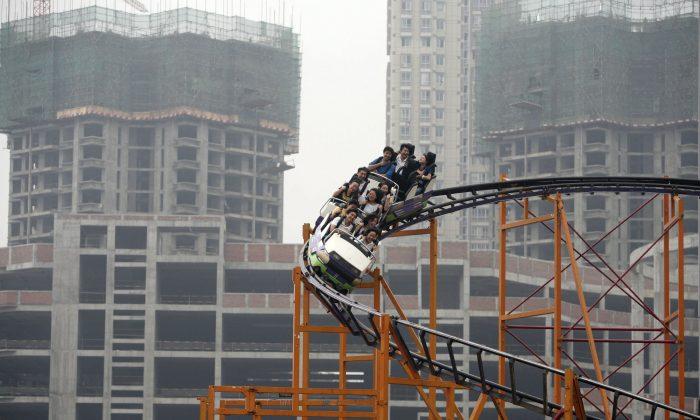Even when China’s stock market rose 59 percent from January this year to June, many outside observers thought the Chinese stock market was an accident waiting to happen.
Many Chinese, however, thought for better or worse that the Chinese regime was actually in charge of managing the market and would be able to prevent a crash. With the benefit of hindsight, this view has been both right and wrong at the same time.
The regime was not able to prevent a drop of almost 30 percent in June and July. However, it did manage to contain the damage, engineer a small rebound, and was certainly active in the markets again on Wednesday: Stocks went down 5 percent before miraculously recovering to close up 1.2 percent.
A crash of more than 10 percent in two days probably was too much to stomach for the authorities.
According to Reuters, it was the “national team” of brokers, mutual funds, and state-owned China Securities Finance Corp who rushed in to stem the tide. Usually, this exercise is enough to convince the majority of retail investors to also start buying again because the government is buying.

This is why Goldman Sachs estimates the national team has “only” bought about $140 billion worth of shares since the crash although the funds reserved for market support are in the range of $300 billion.
Other measures to prop up the stock market this summer include:
- Arbitrary suspension of trading (at one point more than half of the stocks listed in Shanghai were suspended)
- Controlling shareholders and company board members were barred from selling for six months
- Short sellers were threatened with arrest
- IPOs were frozen
- Banks were forced to loan money to brokers to either buy stock outright or increase margin loans
Of course, the People’s Bank of China also did its bit injecting almost $20 billion in liquidity into the banking system on Tuesday, Aug. 18.
While this kind of intervention is usually successful in the short term, it doesn’t work in the long term and also underscores a very important fact: China’s market always was and remains policy driven and has little to do with economic fundamentals.





